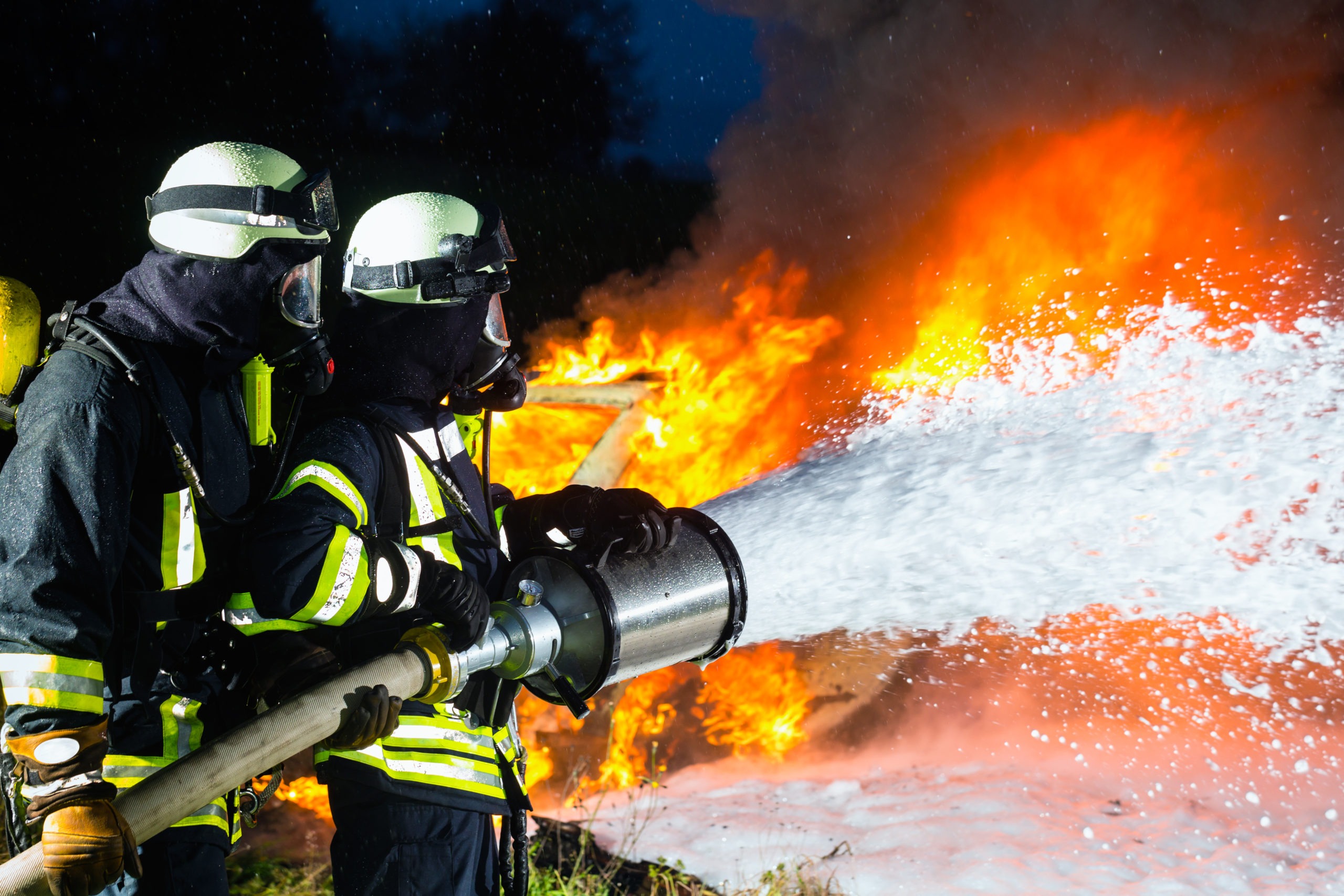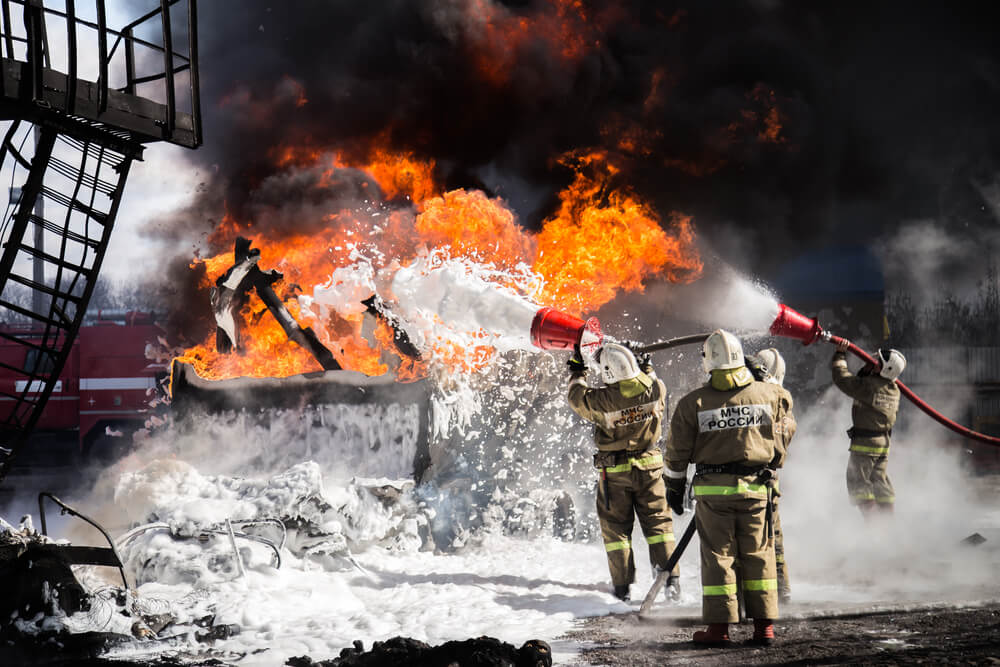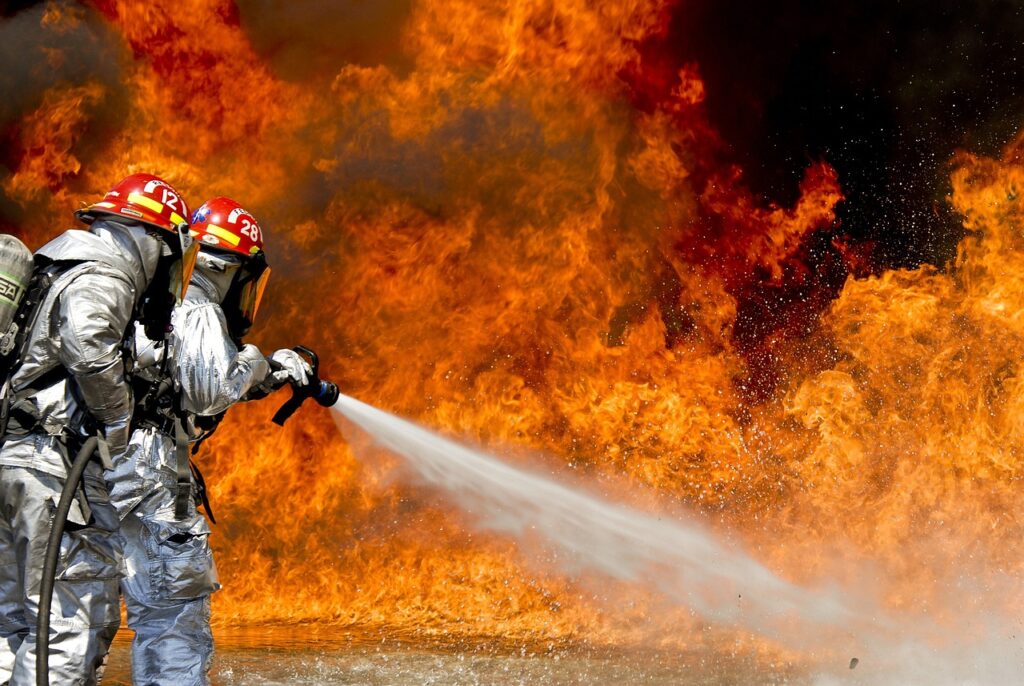Permeating the fabric of modern life, chemicals are ubiquitous, often concealing dangers beneath their utility. Among these, Aqueous Film-Forming Foam (AFFF) has long been vital in combating fires, particularly those fueled by flammable liquids.
According to Zion Market Research, the global AFFF fire extinguishing agent market was worth around $1270.46 million in 2022. It is predicted to grow to around $2103.37 million by 2030 at a CAGR of 7.22%.
However, the revelation of its insidious connection to cancer has illuminated a hidden threat. This has raised urgent questions about its widespread use and the subsequent risks to human health. In this article, we delve into the intricate web of Aqueous Film-Forming Foam exposure and cancer.
Understanding AFFF: The Firefighter’s Ally
AFFF, a firefighting foam, owes its effectiveness to a combination of surfactants, fluorinated compounds, and water. This concoction forms a thin film over flammable liquid surfaces, suppressing fire by smothering the flames and preventing reignition.
One of the distinctive features of Aqueous Film-Forming Foam is its ability to create a stable foam blanket that adheres to all surfaces. This characteristic enhances its effectiveness in controlling and extinguishing fires, even in challenging conditions such as spills.
Additionally, AFFF’s capability to rapidly spread across the surface of the burning material allows firefighters to achieve quick knockdowns. This minimizes the spread of fire and reduces property damage. A ScienceDirect study found that AFFF has optimal efficiency when the gas-liquid ratio of AFFF is 17. With this ratio, Aqueous Film-Forming Foam has an extinguishing time and dosage of 42 seconds and 229 ml.

The Emergence of Concerns: A Toxic Revelation
Despite its efficacy in extinguishing fires, AFFF contains per- and polyfluoroalkyl substances (PFAS). It is a group of synthetic chemicals notorious for their persistence and potential health risks.
PFAS compounds, including perfluorooctanoic acid (PFOA) and perfluorooctanesulfonic acid (PFOS), have garnered increasing attention due to their widespread presence in the environment. Moreover, it also includes other fluorinated and non-fluorinated surfactants that can be hazardous to health. According to IRTC, the total quantity of these surfactants ranges from around 15 to 18%.
Studies have unearthed troubling associations between PFAS exposure and various health ailments, including cancer, immune system disorders, and reproductive issues. Of particular concern is the growing body of evidence linking PFAS exposure to increased cancer risk.
According to TorHoerman Law, this growing concern has led to several lawsuits against AFFF manufacturers. Most of these lawsuits are filed by firefighters and military personnel who are constantly exposed to Aqueous Film-Forming Foam. The plaintiffs allege that the manufacturers knew about these health problems but kept the information from them.
Thus, these plaintiffs are trying to seek compensation by filing a firefighter foam lawsuit. They hold the manufacturers’ negligence for not sharing the right information with AFFF users negligible. According to the Lawsuit Information Center, over 9,000 lawsuits are pending in the Aqueous Film-Forming Foam multidistrict litigation.
Unveiling the Link: AFFF and Cancer
The connection between AFFF exposure and cancer stems from the bioaccumulative nature of PFAS compounds. Once released into the environment, PFAS persist for extended periods, accumulating in soil, water, and biological organisms, including humans. Firefighters, in particular, face heightened risks of exposure due to the frequent use of Aqueous Film-Forming Foam in firefighting operations.
Occupational exposure to AFFF places firefighters at the forefront of this health crisis. Several studies have even highlighted elevated levels of PFAS in their bloodstream and heightened cancer risks.
As stated by the Veterans of Foreign Wars, a study reveals that testicular cancer is the most common cancer associated with AFFF. The study found high testicular cancer risk amongst U.S. active-duty servicemen, and many among them are quite young. Military firefighters, who were the subject, were found to have higher concentrations of PFAS.
The pernicious effects of Aqueous Film-Forming Foam extend beyond the firefighting community. They also encompass military personnel, airport workers, and communities residing near firefighting training facilities and industrial sites where Aqueous Film-Forming Foam is routinely used. Environmental contamination resulting from AFFF runoff further compounds the issue, perpetuating exposure risks for vulnerable populations.
Regulatory Responses and Containment Efforts

In response to mounting concerns surrounding PFAS contamination, regulatory agencies have initiated measures to mitigate exposure risks and curtail environmental pollution.
The United States Environmental Protection Agency (EPA) has addressed PFAS contamination through initiatives such as the PFAS Action Plan. It aims to assess and regulate PFAS compounds more comprehensively.
Furthermore, legislative efforts have been undertaken to restrict the use of AFFF-containing PFAS compounds, with several states enacting bans or regulations on PFAS foams. However, challenges persist in remedying existing contamination and mitigating ongoing exposure risks, necessitating concerted action at the federal, state, and local levels.
Public Awareness and Advocacy: Mobilizing for Change
Public awareness and advocacy are central to addressing the AFFF-cancer nexus. By raising awareness of the health risks associated with Aqueous Film-Forming Foam exposure, communities can mobilize for stricter regulations and proactive safety measures.
Firefighters, in particular, are pivotal in advocating for safer alternatives to AFFF and promoting measures to minimize exposure risks in their ranks. Through collaboration with policymakers, healthcare professionals, and environmental advocates, firefighters can amplify their voices and effect meaningful change.
Frequently Asked Questions
What Are the Harmful Effects of AFFF?
Aqueous Film-Forming Foam contains various chemicals, including perfluoroalkyl and poly-fluoroalkyl substances (PFAS), linked to adverse health effects. PFAS have been associated with an increased risk of cancer, particularly kidney and testicular cancer. PFAS is also associated with other health issues, such as immune system dysfunction, thyroid disorders, and reproductive problems.
Is AFFF Banned?
AFFF is not completely banned, but efforts have been made to restrict its use due to environmental and health concerns. Some jurisdictions have implemented regulations limiting the use of Aqueous Film-Forming Foam containing PFAS, particularly in non-emergency situations. However, AFFF continues to be used in certain industries and applications where fire suppression is critical.
Are There Any Alternatives for AFFF?
Alternatives to AFFF are being explored and utilized in various industries. One alternative includes fluorine-free foam (FFF), which does not contain PFAS chemicals and is considered less harmful to the environment and human health. Other options include high-expansion foam, dry chemical extinguishing agents, and water mist systems.
To conclude, the revelation of the link between Aqueous Film-Forming Foam exposure and cancer underscores the multifaceted challenges posed by ubiquitous chemicals in modern society. As we confront the hidden threats lurking within our midst, we must heed the warning signs and take decisive action.
Through collaborative efforts, we can mitigate the risks posed by AFFF and pave the way for safer, more sustainable alternatives. By illuminating the hidden dangers of Aqueous Film-Forming Foam and mobilizing for change, we can safeguard the health and vitality of present and future generations.






